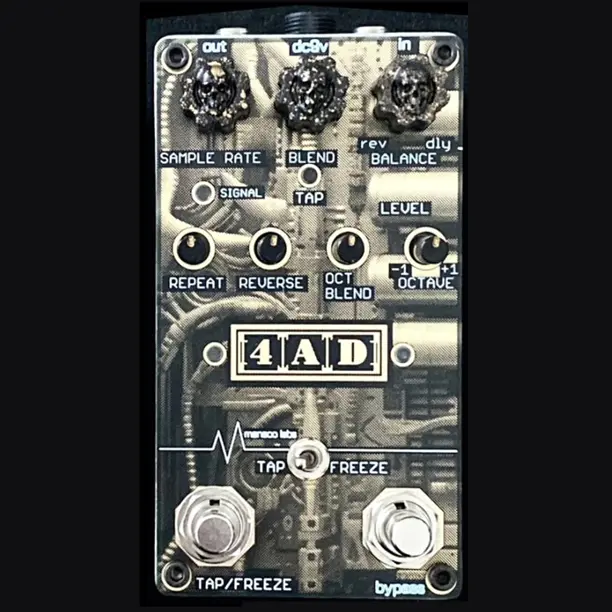
The name “4AD” might mean nothing for the 20 to 30-year-olds among you reading this, but it’s bound to bring back fond memories to anyone who was exploring goth and then alternative music between the early eighties and the early nineties: it’s the name of a UK label that launched bands like Bauhaus, Cocteau Twins, Dead Can Dance, Nick Cave’s early band The Birthday Party, but then also The Pixies, the Throwing Muses and St.Vincent, to mention a few.
However, the 4AD pedal by Maneco (a Uruguayan company primarily manufacturing Eurorack modules) clearly hunkers back to the first phase of the label, before it started signing American college rock bands, when it was still laser-focused on creating a roster of artists offering a sound between the ambient, the goth and the… primal.
It is a digital, slightly lo-fi (12-bit) compact effect blending an up to 6 seconds reverse delay, a pitch shifter, and modulated reverb featuring tap tempo and Freeze momentary effect.
A Sample Rate knob sets the speed of the repeats, but also their fidelity, with slower ones sounding a little grainy. Turn this knob while playing for classic glissando psychedelic effects common to analog delays.
Then on the top row, you get a Blend knob, that mixes dry and wet signals, and a Balance one, that allows you to decide the ration between Delay and Reverb.
The bottom row of controls, featuring smaller knobs, sets the following parameters
- Repeat sets the delay line’s number of repeats.
- Reverse controls the amount of reverse reverb to be added to the mix. This is separate from the delay effect (although it shares its tempo) and precedes it in the signal routing.
- Oct Blend sets the amount of pitch-shifted signal to be added to the effect. This effect is placed after the reverse reverb.
- Oct -1/+1 sets the actual pitch of the transposed signal, which can be anywhere between one octave lower to one octave higher.
Lastly, the Freeze function, activated by turning the toggle switch to the right position (which disables the Tap Tempo) stretches the trails of the reverb for as long as the footswitch is held down.
Check out the video, and go check out some early 4AD records, they are amazing!






















